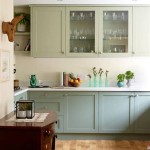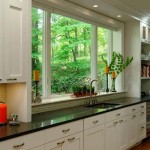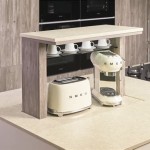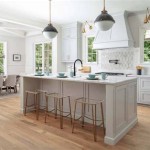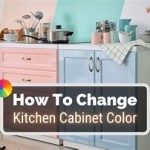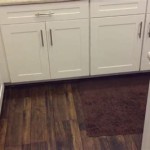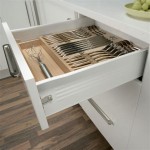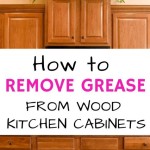B&Q Kitchen Cupboard Paint White: A Comprehensive Guide
Transforming a kitchen can be a significant undertaking, often involving considerable expense and disruption. However, updating kitchen cupboards with paint offers a cost-effective and less invasive alternative to complete replacement. B&Q, a prominent retailer of home improvement products, offers a range of paints specifically formulated for kitchen cupboards, with white being a particularly popular and versatile choice. This article provides a comprehensive overview of B&Q's white kitchen cupboard paint, exploring its benefits, application techniques, and considerations for achieving a professional finish.
The appeal of white kitchen cupboards is multifaceted. White provides a clean, bright, and timeless aesthetic that can enhance the perceived size and airiness of a kitchen. It serves as a neutral backdrop, allowing for flexibility in decorating with accessories, appliances, and wall colors. Furthermore, white cupboards can complement a variety of kitchen styles, from traditional to contemporary.
B&Q's range of white kitchen cupboard paints typically includes formulations designed for durability and ease of application. These paints are often specifically engineered to withstand the demands of a kitchen environment, which includes exposure to moisture, grease, and frequent cleaning. Understanding the properties and characteristics of these paints is crucial for selecting the appropriate product for a particular project.
Understanding Different Types of White Kitchen Cupboard Paint Available at B&Q
B&Q offers several types of white paint suitable for kitchen cupboards, each with its own distinct characteristics and benefits. It is important to carefully consider these different options to choose the most appropriate paint for the specific cupboard material and desired finish.
One common type is specialized cupboard paint, often labeled as "Kitchen Cupboard Paint." These paints are typically formulated with a durable, scrubbable finish, making them ideal for withstanding the rigors of a kitchen environment. They are often self-priming, which simplifies the application process and reduces the number of coats required. These paints are generally water-based, offering low VOC (Volatile Organic Compounds) and ease of cleaning.
Another option is multi-surface paint, which can be used on a variety of materials, including wood, laminate, and metal. While not specifically designed for kitchen cupboards, these paints can still provide a durable and attractive finish, particularly if a suitable primer is used beforehand. Some multi-surface paints offer enhanced adhesion and resistance to chipping and scratching.
Additionally, B&Q may stock chalk paint, which can be used to create a distressed or vintage look on kitchen cupboards. Chalk paint adheres well to most surfaces without extensive preparation, but it typically requires a sealant or wax topcoat to protect the finish and enhance its durability. This option is suitable for those seeking a more rustic or characterful aesthetic.
The specific finishes available within each type of paint can also vary. Options include matte, satin, gloss, and eggshell. Matte finishes offer a low-sheen, non-reflective surface that can conceal imperfections, while gloss finishes provide a high-shine, durable surface that is easy to clean. Satin and eggshell finishes offer a balance between durability and aesthetic appeal.
Before selecting a paint, it is advisable to carefully read the product description and technical specifications to ensure it is compatible with the cupboard material and meets the desired performance requirements. Consulting with a B&Q staff member can also provide valuable insights and guidance.
Preparation is Key: Preparing Kitchen Cupboards for Painting
Achieving a professional and long-lasting finish when painting kitchen cupboards hinges on thorough preparation. This involves cleaning, sanding, and priming the surfaces to ensure optimal paint adhesion and a smooth, even appearance. Skimping on preparation can lead to peeling, chipping, and an overall subpar result.
The first step is to remove all hardware, such as handles, knobs, and hinges, from the cupboard doors and drawers. This allows for easier access to all surfaces and prevents paint from getting on the hardware. It is also advisable to label each piece of hardware and store it in a safe place to ensure easy reinstallation later.
Next, thoroughly clean the cupboard surfaces to remove any grease, dirt, or grime. A degreasing cleaner specifically designed for kitchen surfaces is recommended. Alternatively, a solution of warm water and dish soap can be used. Rinse the surfaces with clean water and allow them to dry completely.
Once the surfaces are clean and dry, sand them lightly with fine-grit sandpaper (e.g., 220-grit). This creates a slightly rough surface that will improve paint adhesion. Pay particular attention to areas that have a glossy finish, as these may require more sanding. After sanding, remove any sanding dust with a tack cloth or vacuum cleaner.
For previously painted cupboards, it is important to inspect the existing paint for any peeling or chipping. If any loose or damaged paint is present, scrape it away with a paint scraper. Fill any holes or imperfections with wood filler and sand smooth once dry.
Priming is a crucial step, especially when painting over a dark color or a glossy surface. A primer helps to create a uniform surface for the paint to adhere to, prevents bleed-through of underlying colors, and improves the overall durability of the finish. Choose a primer that is compatible with the type of paint being used. Apply the primer in thin, even coats, allowing it to dry completely between coats.
Proper preparation is time-consuming, but it is essential for achieving a professional-looking and long-lasting finish on kitchen cupboards. By taking the time to thoroughly clean, sand, and prime the surfaces, a significant improvement in the final result can be realized.
Application Techniques and Achieving a Smooth Finish with B&Q White Kitchen Cupboard Paint
The application of B&Q white kitchen cupboard paint requires careful attention to detail and the use of appropriate tools and techniques to achieve a smooth, even, and professional-looking finish. The method of application can significantly impact the final outcome, so selecting the right tools and employing proper techniques is crucial.
Selecting the appropriate tools is the first step. High-quality paintbrushes and rollers are essential for achieving a smooth, even coat of paint. For detailed areas and edges, a small, angled paintbrush is recommended. For larger, flat surfaces, a foam roller or a short-nap roller can be used. Avoid using cheap brushes, as they can shed bristles and leave streaks in the paint.
Before beginning to paint, stir the paint thoroughly to ensure that it is properly mixed. Avoid shaking the paint, as this can create air bubbles. Pour a small amount of paint into a paint tray or bucket. Dip the paintbrush or roller into the paint, being careful not to overload it. Remove any excess paint by tapping the brush or roller against the edge of the tray.
Apply the paint in thin, even coats, working in the direction of the grain of the wood. Avoid applying too much pressure, as this can create drips and runs. If using a roller, overlap each stroke slightly to ensure complete coverage. Allow each coat of paint to dry completely before applying the next coat.
Sanding between coats can help to create an even smoother finish. Use fine-grit sandpaper (e.g., 320-grit) to lightly sand the surface after each coat of paint has dried. This will remove any imperfections and create a better surface for the next coat to adhere to. Be sure to remove any sanding dust before applying the next coat of paint.
For a particularly durable and professional finish, consider applying a clear topcoat. This will protect the paint from scratches and stains and make it easier to clean. Choose a topcoat that is compatible with the type of paint being used. Apply the topcoat in thin, even coats, following the manufacturer's instructions.
When painting kitchen cupboards, it is important to maintain a clean and organized workspace. Cover any surfaces that you do not want to paint with drop cloths or plastic sheeting. Clean up any spills or drips immediately. Allow the paint to dry completely before reattaching the hardware and reassembling the cupboards.
Spray painting is also an option for applying B&Q white kitchen cupboard paint. Using a paint sprayer can provide a very smooth and even finish, but it requires more skill and preparation than using a brush or roller. If using a paint sprayer, be sure to follow the manufacturer's instructions carefully and wear appropriate safety gear, such as a respirator and eye protection.
Regardless of the application method chosen, patience and attention to detail are essential for achieving a professional and long-lasting finish. By carefully following these techniques and tips, it is possible to transform kitchen cupboards with B&Q white kitchen cupboard paint and create a beautiful and functional space.
Ultimately, selecting B&Q white kitchen cupboard paint requires careful consideration of different paint types, finishes, preparation techniques, and application methods. Thorough research and planning will lead to the best possible outcome for a kitchen cupboard painting project.

V33 Renovation White Satinwood Cupboard Cabinet Paint 750ml Diy At B Q

Goodhome Durable North Pole Brilliant White Matt Cabinet Wardrobe Paint 750ml Diy At B Q

Dulux Cupboard Paint 600ml White Diy At B Q

Rust Oleum Steamed Milk Matt Kitchen Cupboard Paint 750ml Diy At B Q

V33 Renovation Linen Satin Kitchen Cupboard Cabinet Paint 2000 Ml Diy At B Q

V33 Renovation White Satinwood Cupboard Cabinet Paint 2l Diy At B Q

Frankie Stone Cupboard Paint Off White 2 5 Litre Refresh Wood Furniture Cabinets Diy At B Q

Goodhome Caraway White Base Unit W 600mm Diy At B Q

Kitchen Cupboard Paint How To Your Cupboards

Goodhome Caraway White Base Unit W 400mm Diy At B Q
Related Posts

